#alouatta
Explore tagged Tumblr posts
Text
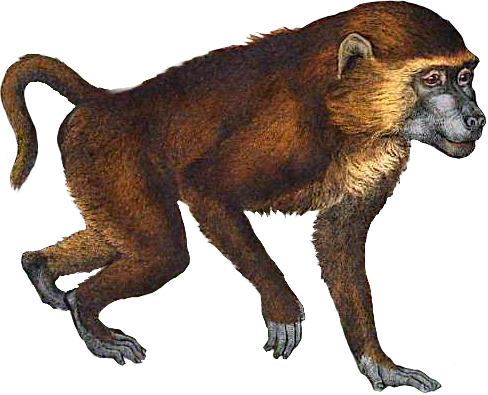

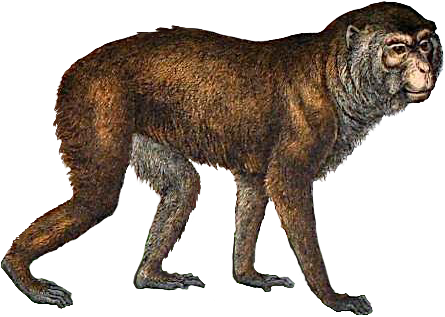
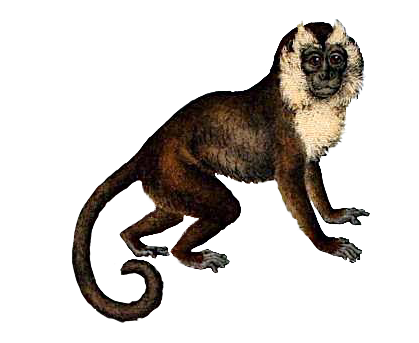
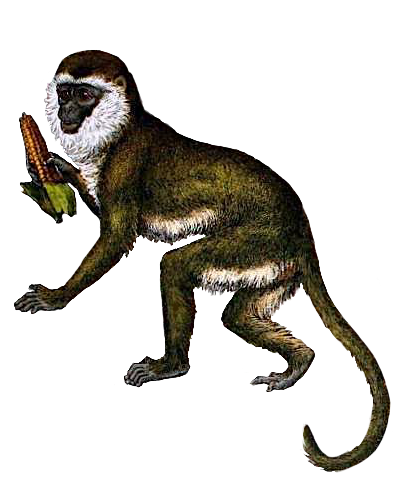

A mixture of monkeys:
Papio cynocephalus, yellow baboon Mandrillus sphinx, mandrill Macaca sylvanus, Barbary macaque Sapajus apella, brown capuchin Chlorocebus sabaeus, green monkey Alouatta palliata, mantled howler monkey
Via Natural History of the Animal Kingdom for the Use of Young People, W. F. Kirby, 1889
#mammalia#illustration#w f kirby#transparent#1889#primates#monkeys#papio#papio cynocephalus#mandrillus#mandrillus sphinx#sapajus#sapajus apella#chlorocebus#chlorocebus sabaeus#alouatta#alouatta palliata#png#vintage#antique#public domain
11 notes
·
View notes
Text

Mantled Howler
18 notes
·
View notes
Photo

A brown howler monkey (Alouatta guariba) in Caratinga, Brazil
by Paul Ellis
#brown howler monkey#howler monkeys#monkeys#Alouatta guariba#Alouatta#atelidae#simiiformes#haplorhini#primates#mammalia#chordata#wildlife: brazil
52 notes
·
View notes
Text

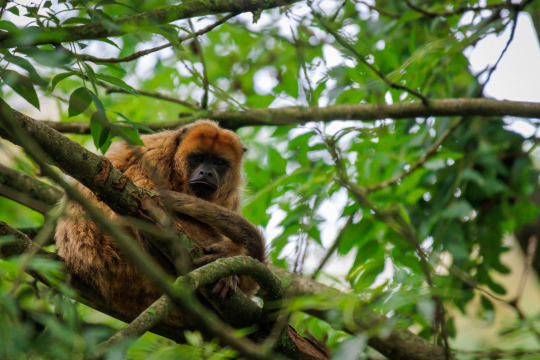
#ZooParc#Overloon#Zooparcoverloon#Photography#Photo#Zoophotography#zoo#animal#animals#animalphotography#howlermonkey#monkey#alouatta#monkeys#SquirrelMonkey#Saimiri#boliviensis
2 notes
·
View notes
Text

The hind end of a Mantled Howler Monkey (Alouatta palliata) displaying unusual depigmentation (possibly vitiligo?)
Howler monkeys with unusual depigmentation are becoming increasingly common, and research is suggesting this may be due to increased pesticide exposure.
43 notes
·
View notes
Text





Colombian red howler (Alouatta seniculus), family Atelidae
The underside of the tail is bare of fur for the last third of its length, which helps with grabbing branches.
Avifauna, taken July 2024
#animals#zoo#zoo photography#nature#Colombian red howler#Alouatta seniculus#atelidae#howler#avifauna
3 notes
·
View notes
Text
In The Heart Of The Amazon, This Pristine Wilderness Shows Nature’s Resilience
Ecuador’s Yasuní National Park, Along the Banks of the Napo River, Shows How Biodiversity Can Thrive When Humans Don’t Interfere.

A Butterfly sits perched on the shell of an endangered Yellow-Spotted River Turtle (Podocnemis Unifilis). The butterfly is drinking the turtle’s tears—a symbiotic behavior where the insect obtains minerals, especially sodium, to compensate for its scarcity in this environment.
— Photographs byThomas Peschak | ByJúlia Dias Carneiro | April 22, 2024
Amid the din of tragic tales of Environmental Degradation in the Amazon, there are other, quieter but no less compelling stories testifying to the sheer power of nature to thrive when left untouched. Such is the case of the Napo River, which flows along the north of Ecuador’s Yasuní National Park.
“It’s a place where all your senses explode. You’re not just seeing life all over, you’re hearing calls of birds, frogs, the wind; smelling the pollen of plants, the soil, the rain. It’s overwhelming,” says biologist, conservationist and environmental Photographer Lucas Bustamante. “For anyone in love with nature, it’s like being a kid in a toy store.”
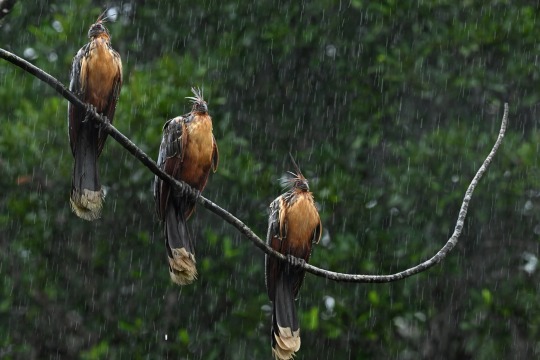
A trio of Hoatzins (Opisthocomus Hoazin) hang over a stream by the Napo River. Hoatzins build their nests above streams as a protection mechanism. If predators try to raid their nests, the young chicks leap to the water to escape, and use their claws to climb back into their nests once the danger has passed.
Established in 1979 in northwestern Amazonia, Yasuní National Park is the largest conservation area in Ecuador. It protects some 1,1 million hectares of Amazon rainforest, an area roughly the size of Croatia. It’s one of the most biodiverse forests on the planet—and the Napo River is the artery pumping life into its heart.
The river begins in the high slopes of the Andes to the east and marks the park’s northern frontier. It eventually joins the Amazon River to the west, after crossing into Peru.
Bustamante is from Ecuador, and he organizes expeditions for photographers into Añangu, a village by the Napo River managed by local Kichwa indigenous families. Twenty years ago, the group decided to Pursue Ecotourism instead of logging and hunting as their main source of income. The project has thrived, and so has nature.
“It took a few years for the animals to start coming back, and for the forest to start recovering,” Bustamante says. “Right now, it’s like a small paradise, an island of biodiversity.”
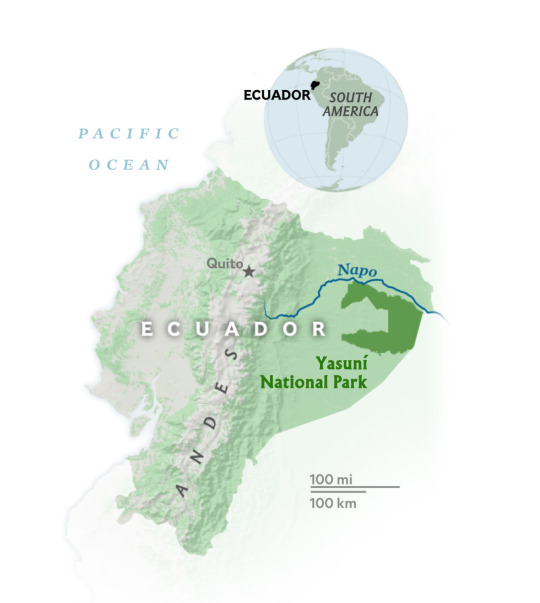
Soren Walljasper, NG Staff
‘Aquatic Spiderweb’
This pristine space was the perfect place for photographer Thomas Peschak, who wanted to capture the deep connections between the Amazon’s animals and its waterways. A National Geographic Explorer, Peschak is working on a long-term project to document the rainforest from the water—its “aquatic spiderweb” of giant rivers with hundreds of tributaries and thousands of streams.
He and Bustamante spent weeks on a canoe paddling on the creeks around the Napo River, looking for endemic species like the giant river otter. These endangered mammals are among the Amazon’s top five predators, wolfing down seven pounds of fish in one day. Their presence is a strong indicator of a healthy Aquatic Ecosystem.
“Across the Amazon we are seeing things deteriorate, but Napo really bucks the trend. Because there’s no poaching, illegal logging or mining a lot of the wildlife around the river is incredibly relaxed around people,” says Peschak.
That ease, in turn, gives Peschak a unique opportunity to capture and showcase many animals’ behavior in the wild, like a butterfly drinking the tears from a river turtle’s eyes, a giant otter snatching up a fish, and red howler monkeys feeding on leaves above a stream.
Not everything is so simple, however. In the days before Peschak’s expedition, heavy rain swelled the Andean headwaters. Water levels in the Napo River rose dramatically, making its streams overflow and bleed into the forest.
The flood, while not unusual for the river and its ecosystem, made the explorers’ search for otters much harder. The flooded streams meant that the animals could swim far inside the flooded forest, away from the main riverways. So Peschak and Bustamante spent seven days paddling with no otters in sight—until, on the final day, they saw a group of them feasting on fish.
“In this job, you have to be patient beyond stupidity,” says Peschak. “When every bone and brain cell in your body tells you to give up, that's when you have to keep going. Patience and persistence are rewarded by nature.”
Highway of Seeds
The remarkable biodiversity around the Napo River reflects its descent from the foothills of the Andes to the Amazon Basin. These ecosystems blend along its banks in a unique way, and this means that the Yasuní National Park has a vast array of species within its bounds.
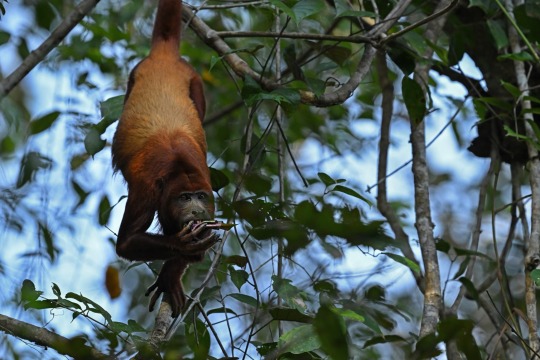
A Red Howler Monkey (Alouatta Seniculus) spotted from a canoe on the water. These monkeys like to pick the best trees, leaves and fruits in the forest, and this connects them to healthy rivers and streams, where trees are always producing new, crunchy leaves. It’s impossible to ignore their presence in the Amazon: their vocalizations to mark territories can be heard miles away.
The Napo is also loaded with nutrients from the Andes, including rich ash from volcanic eruptions. It’s a whitewater river, which designates waterways carrying large amounts of sediments, giving them a muddy color. It’s also an efficient disperser of seeds. “The Napo River is like a highway in which millions of seeds travel from the Andes and across the region, helping species to propagate,” says biologist Gonzalo Rivas-Torres.
This flow of seeds is also a crucial food source for the great variety of fish found in the Napo’s waters. And this has ripple effects on the rest of the forest, far beyond the river’s bends.
“Fish depend on the amount of nutrients, fruits and seeds in the water. If the forests by the riversides aren’t in good shape, fish populations will be low, and otters won’t have enough food,” he explains. “Everything is connected.”
Rivas-Torres is the director of the Tiputini Biodiversity Station, a biological field station kept by Universidad San Francisco de Quito in collaboration with Boston University for research, education and conservation.
Their base is on the banks of the Tiputini River, a tributary of the Napo. From this perch, Rivas-Torres says he’s always spellbound to see wildlife so close and all around. His students have wept after seeing a jaguar in the wild for the first time, for example, or when releasing a yellow-spotted turtle back into the river.
“They say they didn’t expect to see this, or they didn’t know Ecuador was also this.” Rivas-Torres says. “It’s a life changing experience.”
#Rivers#Rain Forests#Wildlife Photography#Biodiversity#Floods#Fish 🎣🐟🐠#Wildlife#Heart of the Amazon#Pristine Wilderness#Nature’s Resilience#Ecuador’s Yasuní National Park | Banks of the Napo River#Thriving Biodiversity#No Human Interference#Butterfly 🦋 | Yellow-Spotted River Turtle 🐢 | Podocnemis Unifilis#Photographer | Lucas Bustamante#Hoatzins | Opisthocomus Hoazin#Amazon River#Red Howler Monkey 🙈🐵🐒 | Alouatta Seniculus
0 notes
Text

Alouatta pigra (Mycetes villosus) | Frederick DuCane Godman (1834-1919)
0 notes
Text


This animal was requested!
#south american wildlife#howler monkey#animal polls#poll blog#my polls#animals#new world monkey#monkey#near threatened
51 notes
·
View notes
Text

Black Howler Monkey (Alouatta caraya)
Habitat & Distribution
Prefers tropical rainforests, but can also be found in subtropical, deciduous, and mountain forests
Found in the Amazon Rainforest of southern Brazil, Bolivia, Paraguay, and northern Argentina
Physical Description
Weight: Up to 9.9 kg (22 lbs) for males, and 5.4 kg (12 lbs) for females
Height: 55-91 cm (22-36 in)
Depending on their age, males can have fur ranging in color from dark gold to black; the fur of females is exclusively dark gold
They have large, stocky bodies and long prehensile tails which are hairless on the underside
Behaviour
Live in social groups dominated by a single male, with a harem of females
The territory of groups can overlap, although males will fight each other when they meet
The bulk if the diet is leaves, supplemented by fruits, figs, mosses, bark, seeds, and flowers
Primary predators are jaguars, pumas, and large birds of prey
Key Advantages
Black howler monkeys are excellent climbers and adept at moving through dense canopy
They can also hide among the foliage when they sense predators
Their strong molars allow them to crush hard nuts and seeds, and can deliver a harsh bite
Photo by Mariana Raño
41 notes
·
View notes
Photo

[Age-Related Differences in the Use of the “Moo” Call in Black Howlers (Alouatta caraya)]
https://link.springer.com/article/10.1007/s10764-013-9718-4
126 notes
·
View notes
Text

Mantled Howler Monkey Alouatta palliata
7/28/2023 Guanacaste, Costa Rica
#mantled howler monkey#howler monkey#monkey#monkeys#primate#primates#costa rica#guanacaste#playas del coco#central america#bird#birds#bird photography#wildlife#nature#nature photography#wildlife photography#birding#birdwatching#my photos
14 notes
·
View notes
Text
Brown howler monkeys are dropping dead by the dozens in southern Mexico. Between May 4 and May 21, at least 138 died, with deaths occurring in places where temperatures have been abnormally high, exceeding 43 degrees Celsius (109 degrees Fahrenheit).
Before perishing, the animals suffered convulsions, hyperthermia, and fainting, which are symptoms of dehydration. Organizations responding to the catastrophe note that the main cause of death seems to be heat stroke, although they haven’t ruled out other factors. Deaths have been reported across the state of Tabasco.
“The feeling of the work team is tragic, it is painful,” says Gilberto Pozo, a wildlife biologist at the Institute of Ecology in Xalapa. He was one of the first to witness and document the current catastrophe. “It hurts because all the efforts we have been making for years are going down the drain,” Pozo says, referring to recent efforts to protect the species.
Short-furred and endemic to the southern states of Mexico, brown howler monkeys (Alouatta palliata mexicana) are listed as “vulnerable” by the International Union for Conservation of Nature, and their numbers are decreasing.
Pozo has been studying primates for 22 years. He is a conservationist and executive director of Conservation of the Biodiversity of Usumacinta (Cobius), a civil association that has been working with communities in the region for 13 years to protect endangered species.
In early May, a Cobius team visited a group of howler monkeys in Cunduacán, Tabasco, as part of a rescue and translocation program, this landscape having undergone significant changes in past years, which has endangered the monkeys. During fieldwork, the team saw two monkeys fall from 15-meter-high trees. Despite receiving attention, both died from their falls and showed signs of dehydration. The next day, local people came to leave aerial drinkers and tropical fruits for the primates.
Days later, the team visited the Saraguatos Biopark. There they found five dead monkeys and eight with problems. The team decided to extend their monitoring and detected more deaths, notifying Mexico’s environmental protection agency, the Procuraduria Federal de Proteccion al Ambiente (Profepa). Separate groups found dead monkeys elsewhere in the state of Tabasco, in Comalcalco and Jalpa, and so the scale of the emergency quickly became clear.
Mexico’s Ministry of Environment and Natural Resources has said that for now, it is investigating various hypotheses about what killed the monkeys: heat stroke and dehydration of course, but also “malnutrition or fumigation, or spraying of crops with toxic agrochemicals.” A first necropsy has been conducted on one of the animals, though Pozo points out that molecular analyses of the animal are lacking at this stage. “The doctor in charge does not want to rule out either heat stroke or viral issues,” he says. More tests will follow.
Brown howler monkeys are one of three native species of monkeys in Mexico. They inhabit parts of the states of Veracruz, Tabasco, Campeche, and Yucatan, as well as the nearby countries of Guatemala and Belize. The monkeys sometimes eat fruits and flowers, but principally are folivores: 80 percent of their diet consists of leaves, from which the monkeys obtain water. So if the leaves they eat are dehydrated, the animals consume little water, which leaves them exposed to the effects of high temperatures.
Pozo has witnessed monkeys showing the effects of moderate and severe dehydration. In moderate cases, he explains, the animals show signs of apathy, prostration, poor coordination, and slow movements. Such animals also have congested mucous membranes, high heart rates, and body temperatures over 40 degrees Celsius, and they show signs of vomiting, panting, diarrhea, hypersalivation, and muscle tremors. In severe cases, the monkeys suffer convulsions, irregular heartbeats, fainting, and have no resistance to manipulation. “They become like little dolls,” Pozo says.
Tania Fonseca works at Mexico’s Institute of Ecology (Inecol) as an academic technician for the Transdisciplinary Studies Group in Primatology. Something that inspires her about working with howler monkeys is their resilience—“until these days, when everything is broken,” she says.
If the cause of death is heat stroke, Fonseca says, it will be possible to confirm it through tissue analysis. If that is the reason, she adds, it becomes important to monitor live animals that have endured the heat, because they may have damaged tissues and organs.
Trouble Down on the Farm
The average annual temperature in Tabasco is 27 degrees Celsius (80 F). May tends to be the hottest month, with an average maximum of 36 degrees. However, temperatures this season are particularly high, having soared well beyond 40 degrees (104 F).
But in addition to the high temperatures, landscape modifications must be considered as a culprit, explains Bertha Valenzuela, a native of Comalcalco, Tabasco. Valenzuela has been studying primates for 15 years and says she grew up among monkeys. She remembers them always hanging around her grandmother's house.
The Chontalpa region, where most of Tabasco's monkeys live, today has only 3 percent of its original forest area, with a lot of land adapted for farming. In particular, it is an important cacao-growing area, with more than 3,000 producers. In other countries, cacao is planted in monocultures, but here producers use agroforestry systems—where arboreal vegetation shades the cacao-growing below, and where there is a mix of crops and native species. The difference between the original ecosystem and the plantations is that the forest canopy—the upper part of the trees where the monkeys live—is lower, while the understory, the lower part of the forest, is eliminated to allow for crops.
“In these sites they found conditions that have allowed them to survive, even if they are not the best,” says Valenzuela of the howler monkeys. The animals have been living in the plantations for the last 30 years, but have struggled with the landscape changing yet again in recent years.
Since the 2000s, cacao production has declined, due to plant diseases and falling local prices, causing many people to turn their cacao farms into pasture. Valenzuela explains that this means that, in general, between one cacao grove and another, there are now pastures, agricultural fields, or human settlements. With the fragmentation of the monkeys’ habitat, temperature regulation is not homogeneous. The smaller a fragment of forest is, the more heat it receives from its surroundings. Land-use change is compounding the effects of global heating.
A Mess of Good Intentions
Gilberto Pozo describes the first responses to the emergency as “a sea of people helping out”—a mess, but without bad intentions. “There were more than 150 volunteers. If it wasn’t for the support of the population, it would be difficult,” he says.
But some people took the monkeys to clinics without registering them first or notifying the authorities, so Profepa is now visiting clinics to collect data. Pozo is also worried about volunteers or the primates catching diseases from one another. “They grabbed them, approached them without masks or gloves, hugged them, kissed them, talked to them. That represents a high risk of zoonosis or anthropozoonosis.”
On top of this, there’s the risk that vulnerable monkeys may be mistreated, says Ana María Santillán, founder of the Centro Mexicano de Rehabilitación de Primates, which rescues monkeys that are victims of mascotism and illegal trafficking. As civilians, people should not move a specimen, because it is illegal, she says. “It was a blessing that Profepa got involved,” she adds. Even so, her group has found orphaned juvenile monkeys for sale.
To manage the situation, says Santillán, the civil organizations involved have formed specialized brigades, coordinated by Cobius. One is dedicated to recovering dead or dying animals. Another, which takes care of the monkeys, is made up of veterinarians trained in handling primates, some from Profepa in Tabasco, others from Universidad Juárez Autónoma de Tabasco (UJAT). Another brigade is to perform necropsies. Among the most important actions, Gilberto Pozo explains, has been the setting up of two medical units for treating animals in need.
The experts have asked that people inform the authorities of new cases, and that people who have monkeys take them to the brigade units so that veterinarians can make a record of any affected animals. The response teams also emphasize that the species is very delicate: They should not be given antibiotics or dewormers; people shouldn’t keep any young; nor should the monkeys mix with dogs or cats, because the primates risk catching deadly diseases from them.
Getting Back to Nature
It’s not clear when it will be best to release the affected monkeys, says Fonseca—if environmental conditions don’t change, there’s a risk of this happening again. Particular care needs to be taken when releasing juveniles, regarding which group they are released to and into which site.
Juan Carlos Serio, a researcher at Inecol and head of the Transdisciplinary Primatology Studies Group, points out that better conservation efforts are needed in these habitats. Howler monkeys are great seed dispersers, and losing them from the environment would affect the natural process of forest regeneration. They’ve also been there for a long time. “Losing them means losing an important cultural element,” he says.
With this in mind, there’s work underway to try to make the landscape in Tabasco more monkey-friendly. Jorge Ramos Luna, an academic technician at Inecol and part of Serio’s workgroup, makes videos to engage local communities and promote species conservation by improving the local agrosystems.
One strategy he proposes is to create natural corridors that connect patches of forest. In the neighboring state of Veracruz, he says, one solution is to surround cleared land with “live fences” of trees and vegetation instead of fences made from lumber. “Monkeys are a charismatic species, an umbrella species: If we give them the conditions to survive, we will be providing conditions for many other species,” he says.
Valenzuela has additional suggestions: “The first recommendation is to stop logging, the second is to restore the land, and the third is to contribute with these small actions: of placing water, monitoring the monkeys, so that the people who live with the monkeys get involved in the stability of the populations,” she says.
The inhabitants of the region were already taking care of the monkeys before this massive event. Some had even learned about the types of vegetation that benefit the monkeys, attended management courses, and put water and fruit out for them. This crisis is not the first time that care has been shown by the monkeys’ human neighbors—and the public response this time brings hope that things can be improved.
13 notes
·
View notes
Text
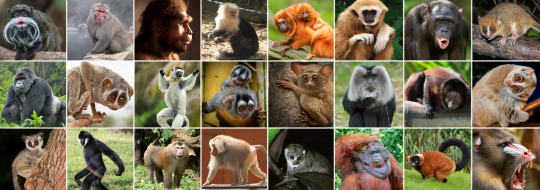
🦍The primate tournament list of candidates has been finalised! Polls will start going up soon!🦧
Thank you to everyone who submitted a species! Here is the full written list:
Basal primates (non-simian primates, including Strepsirrhini and Tarsiiformes)
†Notharctus (Notharctus tenebrosus)
Calabar angwantibo (Arctocebus calabarensis)
West African potto (Perodicticus potto)
Red slender loris (Loris tardigradus)
Bengal slow loris (Nycticebus bengalensis)
Pygmy slow loris (Xanthonycticebus pygmaeus)
Senegal bushbaby (Galago senegalensis)
Brown greater galago (Otolemur crassicaudatus)
Ring-tailed lemur (Lemur catta)
Verreaux’s sifaka (Propithecus verreauxi)
†Archaeoindris (Archaeoindris fontoynontii)
†Megaladapis (Megaladapis madagascariensis)
Madame berthe’s mouse lemur (Microcebus berthae)
Aye-aye (Daubentonia madagascariensis)
Philippine tarsier (Carlito syrichta)
Pygmy tarsier (Tarsius pumilus)
New world monkeys (Platyrrhini)
Wied’s marmoset (Callithrix kuhlii)
Goeldi’s marmoset (Callimico goeldii)
Bearded emperor tamarin (Saguinus imperator subgrisescens)
Golden-headed lion tamarin (Leontopithecus chrysomelas)
Panamanian white-faced capuchin (Cebus imitator)
Central American squirrel monkey (Saimiri oerstedii)
Gray-bellied night monkey (Aotus lemurinus)
Bald uakari (Cacajao calvus)
Madidi titi monkey (Plecturocebus aureipalatii)
Atlantic titi monkey (Callicebus personatus)
Black bearded saki (Chiropotes satanas)
White-faced saki (Pithecia pithecia)
Colombian red howler (Alouatta seniculus)
Brown spider monkey (Ateles hybridus)
Northern muriqui (Brachyteles hypoxanthus)
Yellow-tailed woolly monkey (Lagothrix flavicauda)
Old world monkeys (Cercopithecidae)
Mantled guereza (Colobus guereza)
Zanzibar red colobus (Piliocolobus kirkii)
Nepal gray langur (Semnopithecus schistaceus)
Silvery lutung (Trachypithecus cristatux)
Golden snub-nosed monkey (Rhinopithecus roxellana)
Proboscis monkey (Nasalis larvatus)
Red-shanked douc (Pygathrix nemaeus)
Collared mangabey (Cercocebus torquatus)
Japanese macaque (Macaca fuscata)
Rhesus macaque (Macaca mulatta)
Hamadryas baboon (Papio hamadryas)
Mandrill (Mandrillus sphinx)
Gelada (Theropithecus gelada)
Common patas monkey (Erythrocebus patas)
Bale mountains vervet (Chlorocebus djamdjamensis)
De brazza’s monkey (Cercopithecus neglectus)
Apes (Hominoidea)
Lar gibbon (Hylobates lar)
Pileated gibbon (Hylobates pileatus)
Kloss’s gibbon (Hylobates klossii)
Northern white-cheeked gibbon (Nomascus leucogenys)
Siamang (symphalangus syndactylus)
†Junzi (Junzi imperialis)
Bornean orangutan (Pongo pygmaeus)
†Gigantopithecus (Gigantopithecus blacki)
†Dryopithecus (Dryopithecus fontani)
Western lowland gorilla (Gorilla gorilla gorilla)
Chimpanzee (Pan troglodytes)
Bonobo (Pan paniscus)
†Australopithecus (Australopithecus afarensis)
†Panranthropus (Panranthropus boisei)
†Flores hobbit (Homo floresiensis)
†Neanderthal (Homo neanderthalensis)

The first set of polls will go up as soon as I have finished writing the descriptions! In the meantime, I would appreciate if you could share this tournament around- it won’t be much of a tournament if there aren’t that many people voting! In going down the research rabbit hole I’ve found so many interesting species and stories, and I promise learning about them here will be worth your time!
#primate bracket#tournament#tumblr tournament#poll#polls#primate#primates#extinct primates#biology#animals#zoology#please let me know if I made a mistake anywhere!
99 notes
·
View notes
Text
Excerpt from this story from The Revelator:
Imagine a vast agricultural field, endless rows of soy or corn running for acres in every direction. Now imagine that this field grows where a mighty forest once stood. The forest, long since chopped down by human hands and machines, now exists in just a handful of pockets, a few spots here and there where the original trees — and their inhabitants — still live.
It shouldn’t be a hard image to visualize. We’ve all seen it: the lonely patches of forest, grassland or other natural systems squeezed between farmland, buildings or highways.
These pockets of undeveloped land may be small, but for many wild plants or animals, they’re all that remains. Those often-endangered species depend on fragmented habitats for their continued survival.
But although the sites serve as vital refuges for wildlife, fragmented habitat comes with a cost — sometimes many costs — and species carry those burdens unevenly.
To understand how habitat fragmentation affects wildlife, I often think of a study I first covered in 2016 about three monkey species — the white-fronted capuchin (Cebus albifrons), the Venezuelan red howler (Alouatta seniculus), and the critically endangered brown spider monkey (Ateles hybridus). All three live in Colombia’s Magdalena Valley, where they’ve been forced to adapt to life in and around massive cattle ranches.
During the study researchers visited 10 forest fragments that had become isolated from each other by the cattle pastures, the San Juan River and natural savanna. They studied each area for signs of the three monkeys and the health of the forest itself.
In the process they developed three case studies about the ways species adapt — or fail to adapt — to habitat fragmentation. They also provided insight into how other animals might fare in similar situations.
7 notes
·
View notes
Text
6 notes
·
View notes